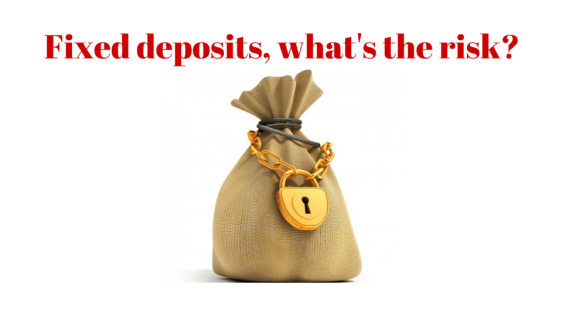Risk of investing in FD!

We all know that FD is a safe instrument to invest and there is no possibility of loss of money in it.
However, have you ever thought that investing in FD could be risky?
What can be the risk of investing in a safe instrument like FD?
Let’s analyse a simple scenario below.
The scenario assumes that you come in 30% Income Tax bracket.
Cost of soap ten years ago = Rs. 20
Cost of soap today = Rs. 50
Value of Rs. 20 invested in FD during last ten years = Rs. 35
So, if you had invested Rs. 20 in FD ten years ago, you will not be able to buy the same soap today.
Same concept can be applied to any other household items like grocery, apples, milk etc.
You will be surprised to see that all the basic household items have increased much more than the returns from FD.
So, is FD safe??
As shown above, you have actually lost the purchasing power of your money by investing in FD.
Another commonly used word for this is “Inflation adjusted returns”.
So, in other words, FD gives negative Inflation adjusted returns. That’s the biggest risk of investing in FD.
What’s the Alternative to FD?
There are many alternatives that can produce higher inflation adjusted returns in the long run. However, not all of them are as safe as FD.
In this blog, we will cover one such alternative that is having a similar risk profile as FD but provides higher “Inflation adjusted returns” for the investor.
The alternative that we are talking about is the Debt Mutual Funds. Some low risk debt mutual funds invest in highly rated fixed instruments like Government bonds, RBI bonds, Money market instruments, Bank FDs etc.
These funds have a similar risk profile like FD and also offer similar pre-tax returns as FD. However, their tax treatment is different than FDs which increases the post-tax return in the hands of an investor.
Here’s how post-tax returns of debt mutual funds are better than FDs: - Suppose you have invested Rs. 100 for last 3 years. Interest rate that you got is 8%. Below will be the difference in returns (FD Vs. Debt Mutual funds)
Fixed Deposit –
End of 1st year:
Interest: 8% of Rs. 100 = 8. Post tax returns = 5.6
Amount after 1 year = Rs. 105.6
End of 2nd year:
Interest: 8% of Rs. 105.6 = Rs. 8.5. Post tax returns= Rs. 5.9
Amount after 2 years = Rs. 111.5
End of 3rd year:
Interest: 8% of Rs. 111.5 = Rs. 8.9. Post tax returns= Rs. 6.3
Amount after 3 years = Rs. 117.8.
So, at the end of 3 years, you will earn only Rs. 17.8 post tax.
On the other side, Debt Mutual funds –
End of 1st year:
Interest: 8% of Rs. 100 = Rs. 8. No tax.
Amount after 1 year = Rs. 105.6
End of 2nd year:
Interest: 8% of Rs. 108 = Rs. 8.6. No tax.
Amount after 2 years =Rs. 116.6.
End of 3rd year:
Interest: 8% of Rs. 116.6= Rs. 9.3. No tax.
Amount after 3 years = Rs.126.
Now, if at the end of 3rd year, you wish to withdraw your amount from Debt Mutual funds, you will have to pay the following Income Tax (Assuming the rate of Inflation for 3 years as 7%):
You will have to pay tax of 20% for gains of only 1% (8% - 7%).
Tax amount = 20%*(126-122.5) = Rs. 0.7
Post tax amount in Debt Mutual fund = Rs. 125.3.
Comparison of Returns: So, as compared to Fixed Deposit, your post tax returns in a Debt Mutual fund will be significantly higher for an investment time horizon of 3 years and above.
Get Expert Financial Advice
Book an introductory call with our Certified Financial Planner to explore how we can help you achieve your financial goals.
Book Your Appointment


